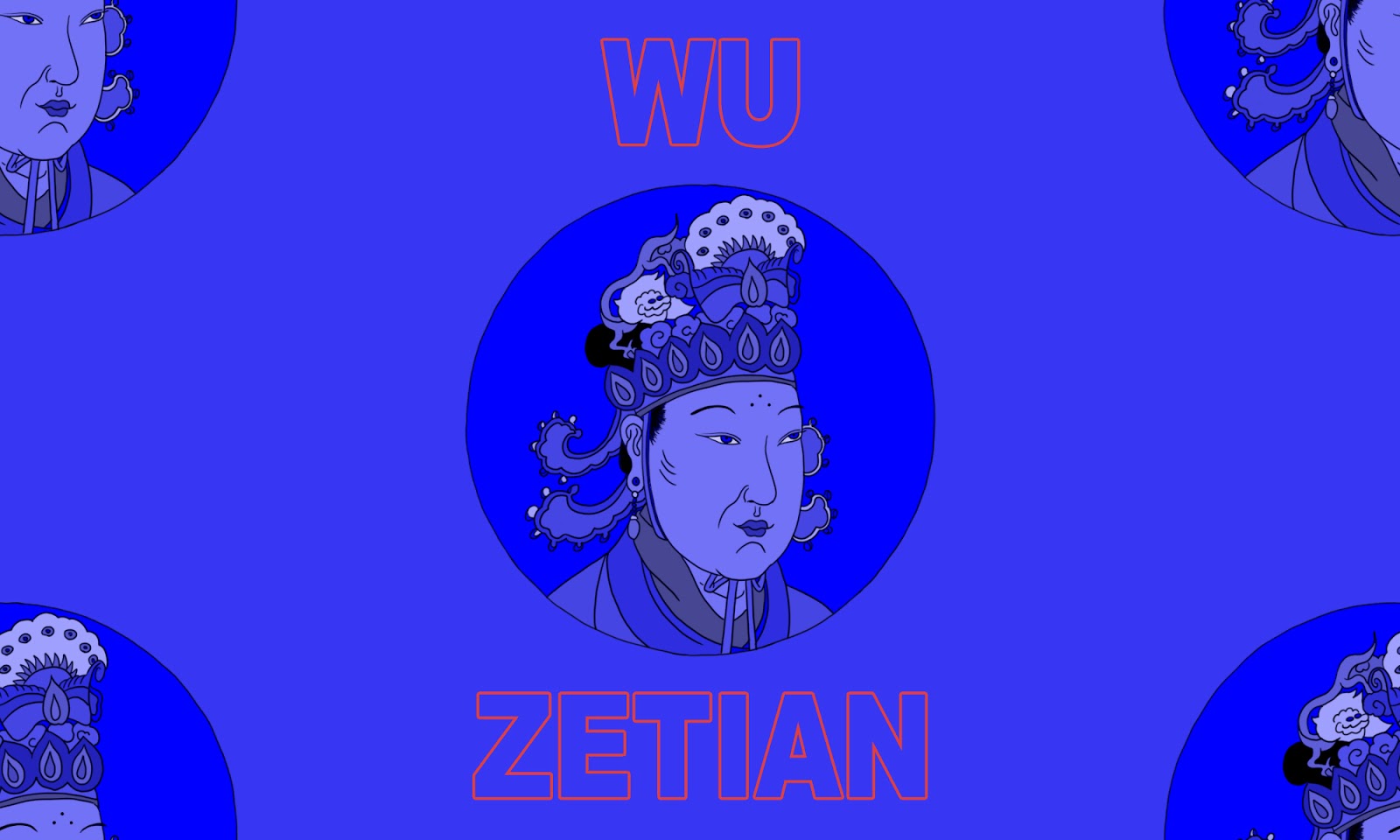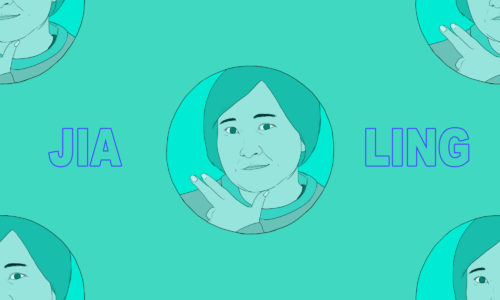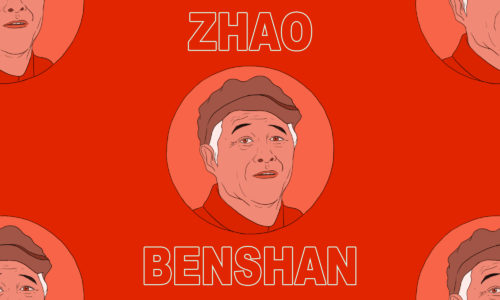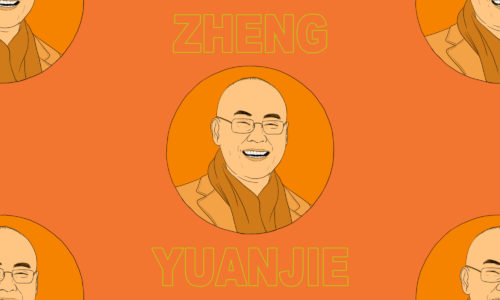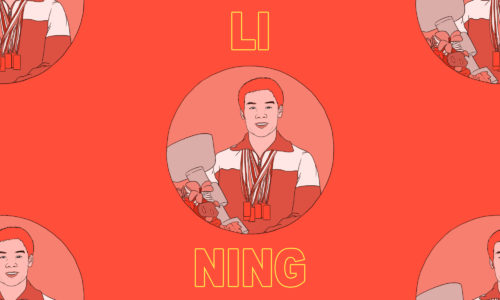“She killed her sister, butchered her elder brothers, murdered the ruler, poisoned her mother. She is hated by gods and men alike.”
Thus did contemporary historians lash out at China’s only female emperor; they probably would have omitted her entirely had it not been for the spectacular changes she wrought on the Tang Empire. These they mentioned through gritted teeth, but were quick to add tales of torture, debauchery, and murder. She “might have ranked among China’s most outstanding rulers,” notes historian John Keay, “but for the handicap of gender.”
Therein lies the tragedy of Wǔ Zétiān 武则天.
Who is Wu Zetian?
For some, she’s a brilliant statesman slandered by Confucian misogyny; for others, she’s a blood-soaked usurper who schemed her way to power. “All fell before her moth brows,” says contemporary poet Luò Bīnwáng 骆宾王. “She whispered slander from behind her sleeves, and swayed her master with vixen flirting.” No tradition was too strong, no convention too entrenched for her to mold or break according to her needs.
Her first steps toward power came from her family. Unlike other dynasties, the Tang tolerated the education of women. That meant her father, a Duke and general, ensured her active mind was fueled with the Confucian classics and practiced music, poetry, and public speaking. She was also lucky to have been born incredibly pretty: only the fairest in the kingdom gained entry into the imperial harem, as Wu did around 636 AD, aged 14. The Emperor Tàizōng 太宗 named her Měiniáng 美娘, “The Charming Lady.”
Although just a maidservant, Wu managed to corner the emperor while changing his bed and impressed him with her wit and knowledge of Chinese history. He promoted her to be his secretary, winning the admiration of numerous male courtiers, including the Prince of Jin, the ninth son of Taizong, benign but considered too weak by his father. It’s likely he became her new lover.
It was this relationship that got her out of the monastery she’d been cast into at the death of Taizong, coming back as the consort to the prince, the newly crowned Emperor Gāozōng 高宗. She returned to a crowded court: Gaozong already had two women competing for his affections — Empress Wang and Consort Xiao. Both were suddenly removed from their positions by Gaozong when he believed Wu’s claim that the two had murdered her newborn daughter. Later historians accused her of killing the baby herself, using its corpse for her first coup d’etat.
With that, Wu became Gaozong’s empress in 655, gradually entrusted with all affairs of state, especially after the emperor suffered a paralyzing stroke in 660. Gaozong sat enthroned before his ministers as usual while they counseled him, but Wu would be parked behind a screen, listening in. “Promotion or demotion, life or death, were settled by her word,” according to Song dynasty historian Sīmǎ Guāng 司马光 in the Zizhi Tongjian.
Perhaps she had a ruthless streak. One story from the Zizhi Tongjian features Wu remembering the days of Taizong, who’d been given a tribute horse no one could break in. “I can control it,” she said. “But I need three things: an iron whip, an iron mace, and a dagger. If the iron whip is not obeyed, then the head will be struck with the iron mace, and if that is not obeyed, then the throat will be cut with the dagger.” Power, it seems, came from fear and dominance — with little time for people she couldn’t use.
The court was soon tamed. A niece whom Gaozong had been attracted to died of poisoning in 666. Her eldest son, who supported her enemies, died mysteriously in 675. When Gaozong died in 683 (unobserved and alone, a strange abnormality for Chinese emperors), Wu installed her second son Zhongzong on the throne. She deposed him after two months when he started showing signs of independence, installing her younger son, Ruizong. But she executed his wife on charges of witchcraft, and then turned on him. In 690, at the behest of numerous courtiers and even the emperor himself, Wu ascended the throne and launched a new dynasty — the Zhou.
A woman ruling an empire was a shocking idea when Confucian ethics believed they were capable of little more than making babies. But (perhaps with an eye on her own position) Wu championed greater equality for women — bereaved children were to mourn their parents equally, not just their father. She commissioned an anthology of biographies on prominent historical women. In 666, during the first Feng Shan ceremony at Mount Tai since the Han dynasty, Wu convinced Gaozong to let her lead the feminine “Shan” part of the ceremony, flanked by a cohort of women.
But resistance was staunch and unyielding. She crushed numerous revolts throughout her tenure, mainly from disgruntled Tang courtiers. According to the Zizhi Tongjian, 36 ministers were killed in the 690s, a thousand members of their families enslaved. According to one legend — which Mao told a member of his staff — a minister raised a problem with Wu: who would dare apply to be an official when she killed so many of them? Wu waited until nightfall and ordered a bonfire lit — hundreds of moths were attracted to the light and incinerated. She explained that as long as there was something (a large salary) to attract candidates, these positions would never be empty for long.
The cumbersome Tang family weren’t spared either, with Wu eradicating 12 minor branches after a plot was uncovered in 684. Toward the end of her reign she even ordered her own grandson and grandson-in-law to commit suicide after they were overheard criticizing her methods.
Her power base came from elsewhere: the people. Enacting policies that were appreciated by the populace would ensure they stayed on side. Copper boxes stood in the capital, into which her subjects could place their suggestions and criticisms — the box leap-frogged the numerous bureaucratic tiers, its contents read by the empress herself.
She resorted to continuity amidst all her change. Her dynasty was meant to be a return to the 790-year stability of the earlier Zhou dynasty, even recasting the Nine Tripod Cauldrons, lost during the Warring States Period. One Buddhist sutra delivered to her prophesied that the Boddhisatva Maitreya would return to Earth and bring universal peace, ruling as a woman. Under her, “harvests will be bountiful, joy without limit. The people will flourish, free of desolation and illness, of worry, fear, and disaster.” She promptly declared herself Maitreya’s incarnation, established Buddhism as the state religion, and commissioned statues of a female Buddha in the great cave systems at Dunhuang and Luoyang.
But her interest in Buddhism seemed to wane upon the death of her former long-term lover, an uppity Buddhist abbot (who she likely had killed). By 700 she had reverted to the Daoist Feng Shan ceremonies.
The price of power
Her rule was highly competent. Campaigns against the Tibetans and Koreans ensured military expansion, and she was able to reopen the Silk Road, previously lost to raiders under Taizong. Agricultural productivity reached an all-time high through her irrigation projects and system of incentives. A rapid increase in households registered for tax swelled the state coffers.
She bolstered meritocracy, overhauling the imperial examination system and launching tests for military leaders. This wrested power away from noble families, ensuring recruitment from lower down the class system. She would interview ministers herself (a tradition continued by all emperors afterward) and appointed capable ministers who continued to serve long after she was gone.
But her reign was marked by a paranoia that increased with age. She set up a highly efficient secret police and encouraged informers. While she was ruler, certain Chinese characters associated with power were changed. Take chén 臣, the word for “vassal to the monarch,” suddenly changed to this —
![]()
— consisting of the words “first” (一 yī) and “loyalty” (忠 zhōng).
Her favoritism played against her. Rarely leaving her bed by her late 70s, she spent hours closeted with two young men named Zhang (possibly brothers), relying on them for advice and sexual favors. The two men’s rapid rise to power led to a palace coup. When Wu abdicated in 704 in favor of Zhongzong the two Zhangs were put to death, and Wu died of ill health one year later, aged 81.
Her reign, by Confucian standards, was an embarrassment at best, an abomination at worst. Legends arose that sought to prove her unnatural side — for how else, they wondered, could a woman have so spectacularly subverted the laws of nature? She’s perhaps most well known in China for supposedly cutting off the hands and feet of Empress Wang and Consort Xiao before tipping them both into a vat of wine. But numerous historians have pointed out the similarity of this story and that of an earlier scheming empress, Lǚ Zhì 吕雉.
But she’s been re-examined since the early 20th century, in light of the female emancipation that came with the New Culture Movement. Her drive for meritocracy over oligarchy placed her in favor with Communists: Guō Mòruò 郭沫若 wrote an opera on her life, Chairman Mao praised her political skills and labeled her a “remarkable” woman. Mao’s third wife, Jiāng Qīng 江青, used her as a template in the mid-1970s when her husband was ailing and she worked behind the Chinese throne.
Was she a hero or a villain? Smithsonian Magazine engagingly lays out the impossibility of resolving this question, the source materials irretrievably muddied by bias. There are precious few to start with: according to The Cambridge History of China, less is known about Wu Zetian’s 50-year rule than any other half-century during the Tang. But it stands to reason that it would take an exceptional individual to become the only female emperor in China’s history. She would likely have had to go beyond what the system considered acceptable or predictable to achieve her goal — perhaps even treating her own offspring as disposable tools.
But the lack of source materials allows her to be rehabilitated by historians as both a victim of misogyny and champion of women’s rights — even her greatest critics today can’t deny her abilities as a leader. Her reforms were kept in place by posterity, even while posterity condemned her.
For all the revisionism, Wu can’t escape a legacy of manipulation, sex, and cruelty. A Guangdong writer was imprisoned in 2016 for daring to compare Xí Jìnpíng’s 习近平 wife, Péng Lìyuàn 彭丽媛, to Wu. Glamor idol Fàn Bīngbīng 范冰冰 took up her head-dress in the steamy multibillion dollar series The Legend of Wu Mei Niang, briefly withdrawn by the censors to crop shots of erotically low cleavage.
Today, Wu’s grave is marked by a large gray trapezoid structure in the Qianling Mausoleum, unopened since the Tang. Unlike every other emperor’s tomb, the stele in front of it — reserved for stonemasons to carve lists of her great deeds — stands blank. Perhaps Wu herself wanted this, testimony to how memorable her deeds had been, or believing posterity should be her judge. But a posterity of Confucian men left it bare.
Chinese Lives is a weekly series.
